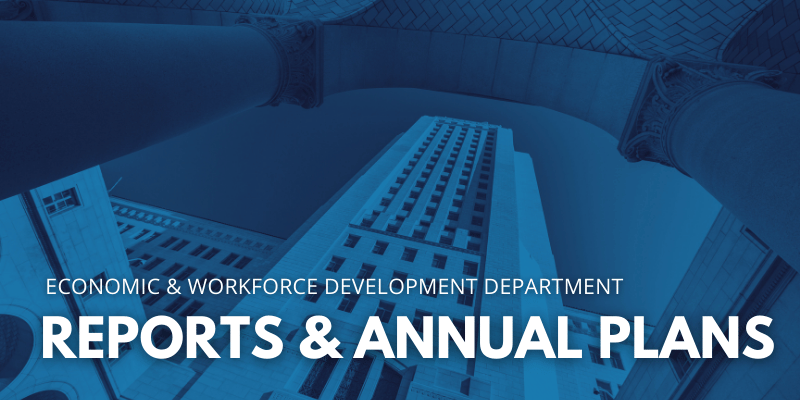
Reports and Annual Plans
-
Annual Plans - Workforce Development Board
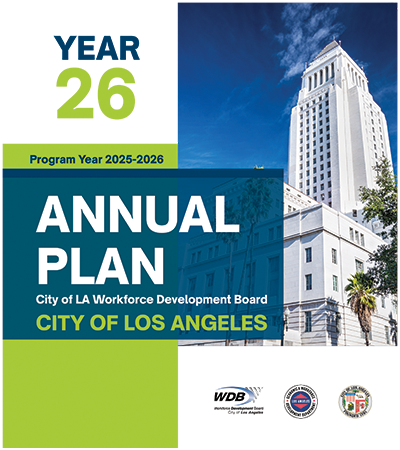 The Annual Plan covers the service strategies, activities, and budget for the City’s Workforce Development System. It outlines how the City will deliver services and meet the objectives of promoting a trained workforce with access to good jobs and a strong business/employer regional economy.
The Annual Plan covers the service strategies, activities, and budget for the City’s Workforce Development System. It outlines how the City will deliver services and meet the objectives of promoting a trained workforce with access to good jobs and a strong business/employer regional economy.
The Workforce Development System is comprised of WorkSource/America's Job Centers of California, YouthSource Centers, and satellite sites, supported by the Workforce Innovation and Opportunity Act (WIOA).
Year Twenty-Six Annual Plan, Program Year 2025-2026
November 2025
- Year Twenty-Five Annual Plan, Program Year 2024-2025
November 2024 - Year Twenty-Four Annual Plan, Program Year 2023-2024
December 2023 - Year Twenty-Three Annual Plan, Program Year 2022-2023
March 2023 - Year Twenty-Two Annual Plan, Program Year 2021-2022
February 2022
- Year Twenty-Five Annual Plan, Program Year 2024-2025
-
Regional & Local Strategic Workforce Development Plans
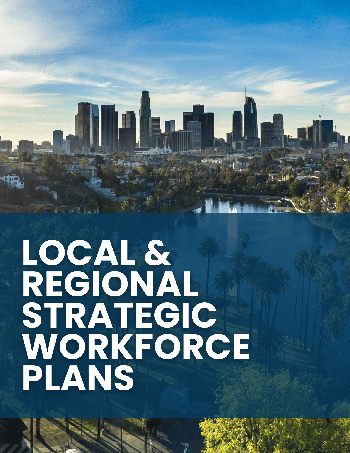 The Local and Regional Workforce Development Plans outline workforce development strategies and are separated into Local Workforce Development Plans and Los Angeles Basin Regional Workforce Development Plans.
The Local and Regional Workforce Development Plans outline workforce development strategies and are separated into Local Workforce Development Plans and Los Angeles Basin Regional Workforce Development Plans.
All Workforce Development Boards are required by law to develop Local Workforce Development Plans for four-year periods, subject to biannual modifications. These plans define employment, training and supportive services for job seekers, dislocated workers, youth, and young adults. All Local Plans must align with the California Workforce Development Board's Strategic State Plan for California's Workforce Investment system.
Also required by law, the Los Angeles Basin Regional Workforce Development Plans define broad strategic goals to ensure the regional workforce system is inclusive to all job seekers, meets the needs of employers and priority growth sectors of the regional economy, and uses pathway strategies and training to build a skilled, competitive workforce. Officially titled the Los Angeles Basin Regional Planning Unit, this collaborative comprises the seven Workforce Development Boards within Los Angeles County.
Los Angeles Local Workforce Plans
Los Angeles Basin Regional Workforce Plans -
AdvantAGE LA
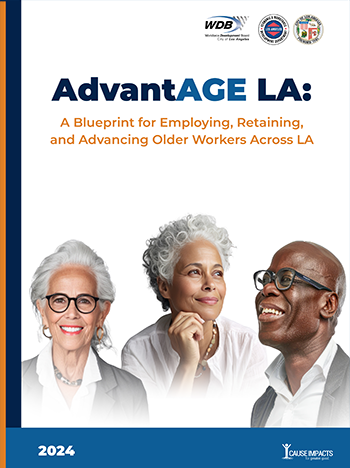
A Blueprint for Employing, Retaining, and Advancing Older Workers Across LAIn an era characterized by rapid change and evolving job markets, the marginalization of Older Workers frequently sidelines individuals who possess invaluable experience and expertise. With a shrinking pool of skilled workers, businesses cannot afford to overlook the wealth of skills older employees offer.
AdvantAGE LA offers actionable recommendations for employers to capitalize on these opportunities, facilitating upskilling, reskilling, and the exploration of new career pathways for employees of all ages. By investing in Older Workers’ continued growth and development, businesses can retain valuable institutional knowledge and expertise while fostering a culture of lifelong learning for employees of all ages.
AdvantAGE LA also provides recommendations for municipalities, service providers, community-based organizations, and education and training providers needed to support Older Workers. By fostering age-inclusive workplaces and investing in the growth and development of employees across all stages of their careers, we can unlock the full potential of our workforce.
Older Adults already represent a significant part of the regional labor force, having outpaced the City’s general population over the past decade. They are working later into retirement, driven by a combination of inflation, uncertainties around economic safety net programs, and an intrinsic desire to remain involved in the workforce. These workers are highly competent and able to meet the demands of modern work.
-
LA Workforce Infrastructure Network Concept Paper
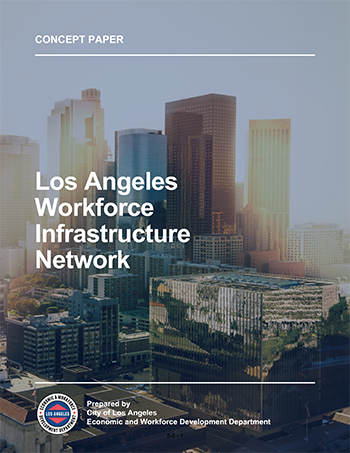
The Economic and Workforce Development Department, the LA City Workforce Development Board and the Mayor’s Office commissioned this concept paper to develop high-level recommendations from crucial partners of the Los Angeles workforce development eco-system to:
Los Angeles and the wider region are poised to receive extraordinary financial support to develop crucial infrastructure, renewable energy projects and expand broadband access. Beyond the anticipated federal funds dedicated to infrastructure, the city has boosted its own spending on housing, transportation, renewable energy, and water management.- Assess the status of workforce preparation for federal Investment Infrastructure and Jobs Act (IIJA) and Inflation Reduction Act (IRA) capital investments;
- Develop strategies to prepare the Los Angeles workforce for these investments and;
- Ensure equity and inclusion in the new quality skilled career pathways opportunities for all LA residents.
This wave of investment from federal, state, and local sources is expected to create thousands of construction and infrastructure-related jobs in the area. While the exact number of jobs is yet to be determined, it is widely acknowledged that we will see a significant increase in high-quality, career advancing positions in skilled trades.
LA Workforce Infrastructure Network Concept Paper
November 2024 -
Horizons 32K Strategic Plan

LA Performance Partnership PilotThe LA P3 - Horizons 32K Strategic Plan is a roadmap to a future where all Los Angeles opportunity youth secure and persist in quality education, training, and employment pathways.
Government and community leaders are embracing our collective responsibility for changing the systemic conditions contributing to youth disconnection in Los Angeles County through the LA P3 strategic plan “Horizons 32K: Los Angeles’s Blueprint for 32,000 Opportunity Youth Dreams”. Building from the successes of the previous LA Performance Partnership Pilot (LAP3) strategic plan, the new Horizons 32K strategic plan reaffirms our commitment to serving LA County’s 143,000 opportunity youth, charting a course toward a more inclusive, supportive future.
Horizons 32K Strategic Plan
November 2024 -
Citywide Workforce Development Strategic Plan
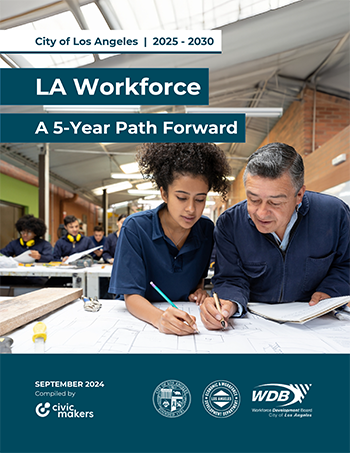
A Path Forward: LA’s 5-Year Workforce Development Strategic PlanA Path Forward is the City of Los Angeles 5-Year Workforce Development Strategic Plan, which lays out a bold, coordinated vision to expand economic mobility, advance equity, and connect 50,000 Angelenos to high-quality, living-wage jobs by 2030. Developed in collaboration with City departments, community organizations, education and training providers, labor partners, employers, and regional stakeholders, the plan strengthens workforce infrastructure.
The 5-Year Workforce Development Strategic Plan is people-centered, data-informed, and aligned with the future of the Los Angeles area, reimagining service delivery to meet the needs of both workers and industries.
Los Angeles Citywide 5-Year Workforce Development Strategic Plan
September 2024 -
Citywide Youth Development Strategic Plan
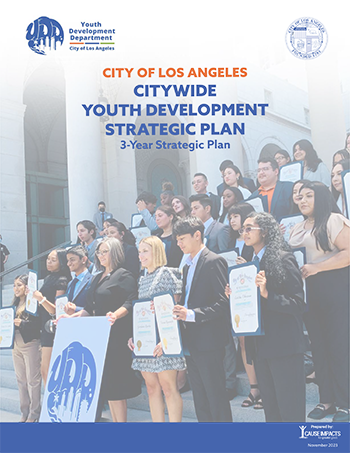
Citywide Youth Development Strategic Plan: 3-Year Strategic PlanThe Citywide Youth Development Strategic Plan is a bold roadmap for the future of youth programs in Los Angeles. It aims to improve access, streamline services, and evaluate resource use, focusing on six key priorities: empowering youth leaders, creating youth spaces, supporting equitable economic opportunities, expanding mental health services, providing affordable housing, enhancing public safety, and simplifying service navigation.
With clear goals, timelines, and metrics, the plan emphasizes equity and inclusivity, addressing the unique challenges faced by vulnerable youth, including those who are low-income, housing insecure, foster care-involved, undocumented, LGBTQIA+, or at risk of violence.
Citywide Youth Development Strategic Plan
November 2023


